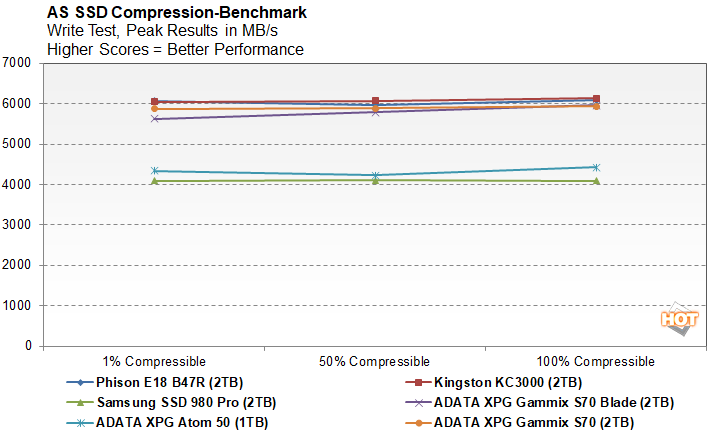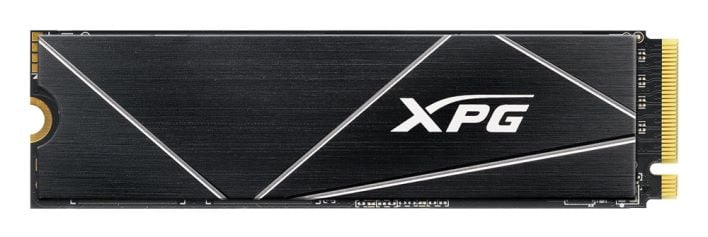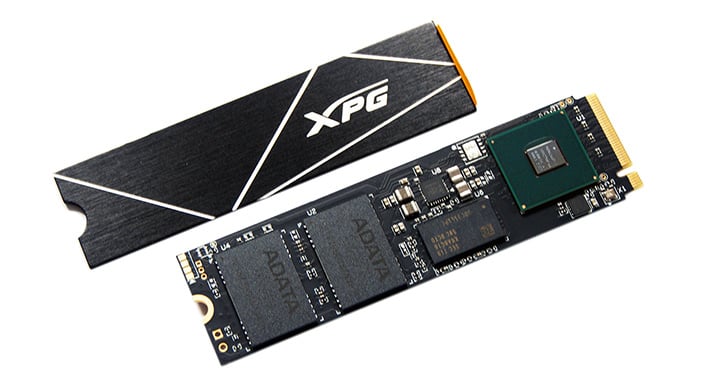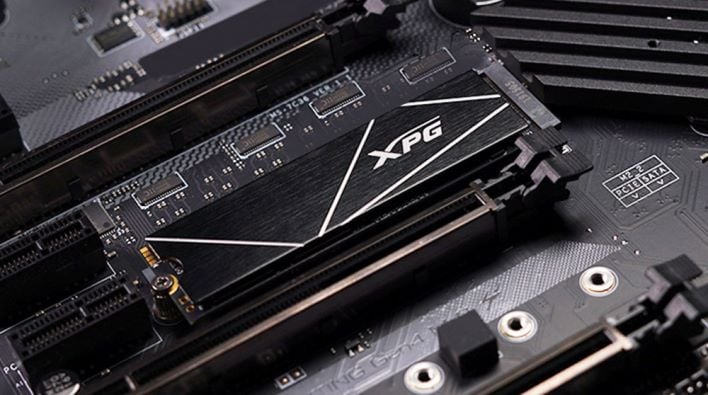ADATA XPG Gammix S70 Blade SSD Review: Super-Fast NVMe Storage
ADATA XPG Gammix S70 Blade SSD Review: Blazing Fast PCIe 4.0 Storage
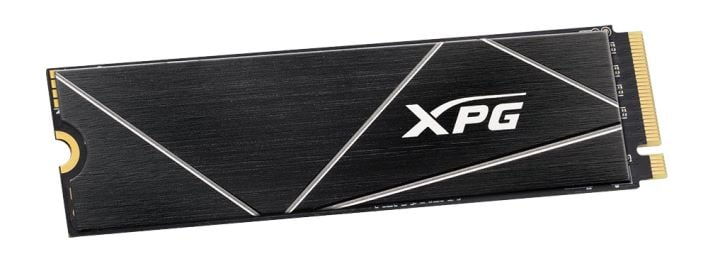
The ADATA XPG Gammix S70 Blade we’ll be showing you here is a prime example of the kind of advances we’ve seen in the solid state storage space this past year. A few months back, we took a look at the XPG Gammix S70 (sans-Blade) and found it to be one of the speediest drives on the market. The S70 packed a relatively-new at the time 8-channel InnoGrit IG5236 controller paired to Micron 96-Layer TLC NAND. Throughout our tests, the S70 put up solid numbers, but the drive required a beefy heatsink and still managed run quite warm. The newer ADATA XPG Gammix S70 Blade takes the same controller, but pairs it to newer 176-Layer Micron TLC NAND and more refined firmware to maintain strong performance, but bring power and thermals down to the point where the Blade no longer requires an oversized heatsink and it’ll actually fit in laptops and the PS5. He’s what the drive’s main features and specifications looks like and then we’ll dig into some performance comparisons, alongside some other top drives, on a completely revamped test system...
Specifications And Features
| Capacity | 512GB / 1TB / 2TB |
| Form Factor | M.2 2280 |
| NAND Flash | 3D NAND |
| Controller | Innogrit IG5236 |
| Dimensions (L x W x H) | 80 x 22 x 4.3mm / 3.15 x 0.87 x 0.17inch (with heatsink) 80 x 22 x 3.3mm / 3.15 x 0.87 x 0.12inch (without heatsink) |
| Weight | 10g / 0.35oz (with heatsink) 7g / 0.24oz (without heatsink) |
| Interface | PCIe Gen4x4 |
| Sequential Read (Max*) | Up to 7400MB/s (PC/Laptop) Up to 6100MB/s (PS5) |
| Sequential Write (Max*) | Up to 6800MB/s |
| 4KB Random Read IOPS(Max*) | Up to 750K |
| 4KB Random Write IOPS(Max*) | Up to 750K |
| Operating Temperature | 0°C - 70°C |
| Storage Temperature | -40°C - 85°C |
| Shock Resistance | 1500G / 0.5ms |
| MTBF | 2,000,000 hours |
| Terabytes Written (TBW)(Max Capacity*) | 1,480TB |
| Warranty | 5-year limited warranty |
Similar to the vast majority of other M.2 drives currently on the market, the ADATA XPG Gammix S70 Blade confirms to the common M.2 2280 (80mm) "gumstick" form factor. ADATA utilizes an attractive, dark-colored PCB with the drive, and populates both sides of the board with an array of components. The PCB is busier than some SSDs we've looked at recently, but one side is masked by a sticker and the other, while exposed right out of box, will likely be masked by the included heat-spreader or your motherboard’s integrated M.2 cooling apparatus.
At the heart of the ADATA XPG Gammix S70 Blade is an 8-channel InnoGrit IG5236 controller. That controller is paired to Micron's 176-Layer 3D TLC NAND Flash memory and a few pieces of DRAM cache memory. The drive features a PCIe Gen 4 x4 interface and support for the NVMe 1.4 specification.
On the surface, these components may seem similar to the original S70, which is based on the same controller and also used Micron NAND. Updated firmware on this drive, in addition to the newer 176-layer NAND, however, improves performance and brings peak power down. As you can see, below though, temps do still get somewhat toasty in comparison to some other NVMe M.2 SSDs. After hours of bechmarking, with the drive installed in a standard mid-tower, during an active ATTO run, we saw temps in the upper 40°C range.
The ultimate performance of the ADATA XPG Gammix S70 Blade will vary depending on the capacity. We are looking at a 2TB drive here, which is the largest being offered – 512GB and 1TB drives are also available. ADATA rates the drives for up to 7,400/6,800MB per second reads and writes, respectively, in a modern PC – in the PS6, transfers peak at 6,1000MB/s. This particular drive’s endurance rating is 1,480TBW, but lower capacity drives offer lower endurance (and vice-versa).

Included with the ADATA XPG Gammix S70 Blade is support for the company’s SSD Toolbox utility, for monitoring, maintaining, and updating the drive. The interface for the tool is somewhat colorful and dated looking, but the functionality and feature set is adequate. ADATA also includes an XPG-branded aluminum heat-spreader should users want to install it. We like this option because it allows owners to opt for the included heat-spreader should they want to use it or attach the beefier heatsinks included on many enthusiast motherboards directly to the SSD, without an additional layer in-between.
ADATA XPG S70 Blade SSD Benchmarks
Under each test condition, the SSDs showcased here were installed as secondary volumes in our testbed, with a separate drive used for the OS and benchmark installations. Our testbed's motherboard was updated with the latest BIOS available at the time of publication and Windows 11 was fully updated. Windows firewall, automatic updates, and screen savers were all disabled before testing and Focus Assist was enabled to prevent any interruptions.
In all test runs, we rebooted the system, ensured all temp and prefetch data was purged, waited several minutes for drive activity to settle and for the system to reach an idle state before invoking a test. All of the drives here have also been updated to their latest firmware as of press time. Where applicable, we would also typically use any proprietary NVMe drivers available from a given manufacturer, but all of the drives featured here used the Microsoft driver included with Windows 11.
HotHardware's Test System:
| Processor: AMD Ryzen 9 5950X Motherboard: Gigabyte Aorus X570 Pro Wi-Fi (X570 Chipset) Video Card: GeForce RTX 3080 Memory: 32GB G.SKILL DDR4-3200 Storage: Samsung SSD 980 Pro (OS Drive) ADATA XPG GAMMIX S70 Blade (2TB) ADATA XPG Atom 50 (1TB) Samsung SSD 980 Pro (2TB) ADATA XPG GAMMIX S70 (2TB) Phison E18 w/ B47R (2TB) Kingston KC3000 (2TB) |
OS: Windows 11 Pro x64 Chipset Drivers: AMD v3.10.22.706 Benchmarks: IOMeter 1.1 HD Tune v5.75 ATTO v4.01.02f AS SSD SiSoftware SANDRA CrystalDiskMark v8.0.4 x64 Final Fantasy XiV: Endwalker PCMark 10 Quick Storage Bench |
IOMeter Benchmarks
IOMeter is a well-respected industry standard benchmark. However, despite our results with IOMeter scaling properly, it is debatable as to whether or not certain access patterns actually provide a valid example of real-world performance. The access patterns we tested may not reflect your particular workloads, for example. That said, we do think IOMeter is a reliable gauge for relative throughput, latency, and bandwidth with a given storage solution. In addition, there are certain highly-strenuous workloads you can place on a drive with IOMeter, that you can't with most other storage benchmark tools.In the following tables, we're showing two sets of access patterns; a custom Workstation pattern, with an 8K transfer size, consisting of 80% reads (20% writes) and 80% random (20% sequential) access and a 4K access pattern with a 4K transfer size, comprised of 67% reads (33% writes) and 100% random access. Queue depths from 1 to 16 were tested...
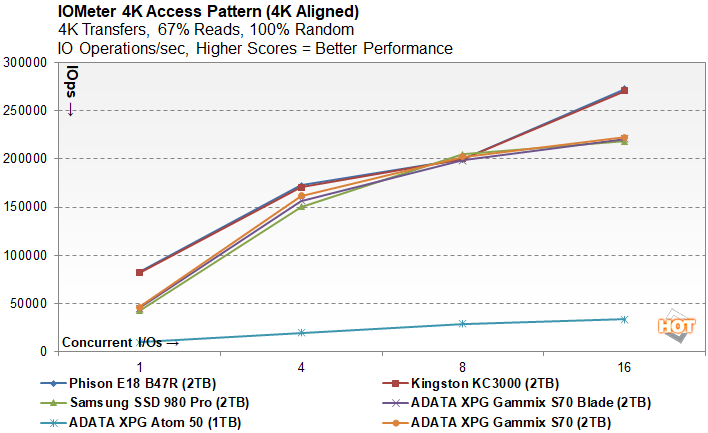
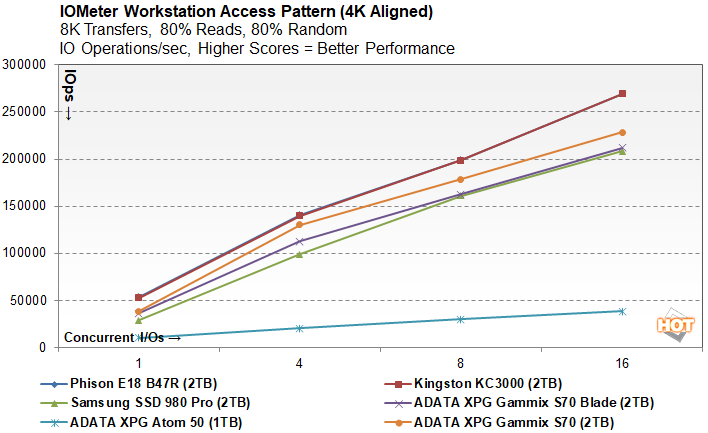
With both of the access patterns we tested, the S70 Blade offered strong performance. With the fully random 4K access pattern, the drive competed for the pole position against Kingston's excellent KC3000. With with the 8K/80/80 access pattern, however, which works in some sequential transfers, the S70 blade landed about in the middle of the pack, ahead of the Samsung 980 Pro but a notch behind the original S70.
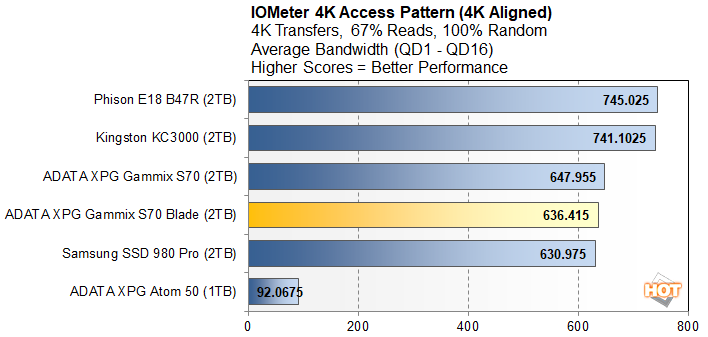
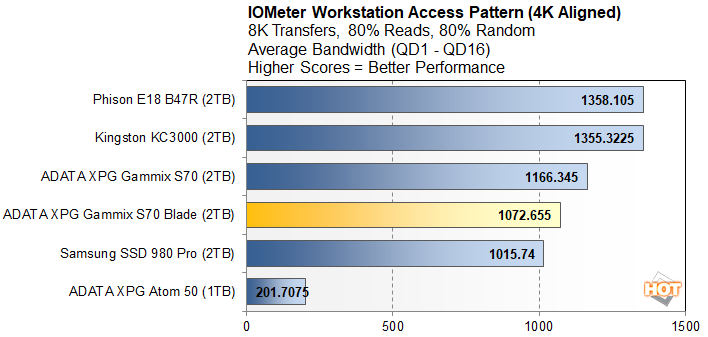
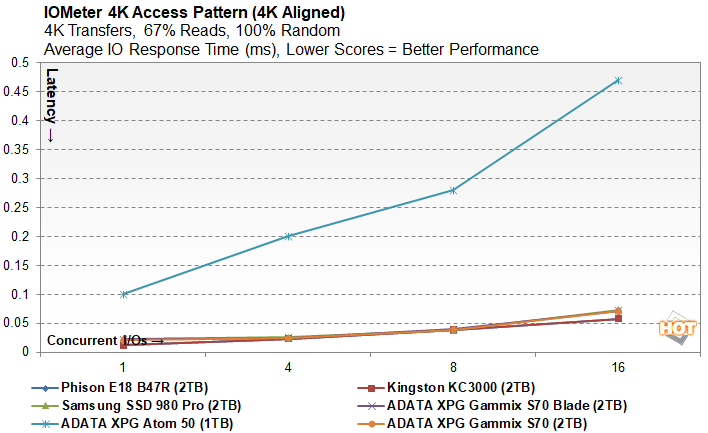
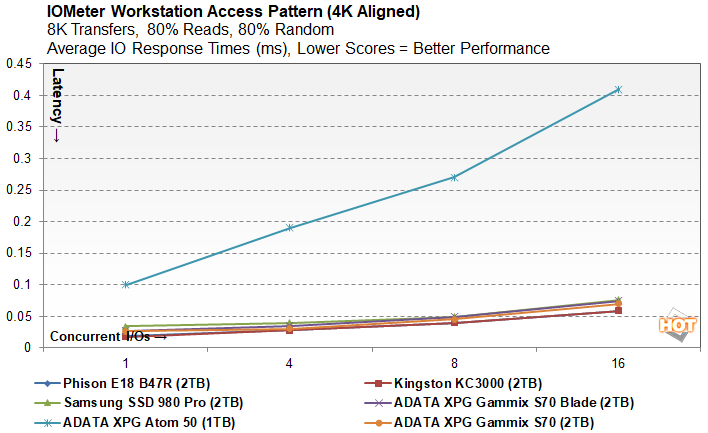
Our latency results clearly illustrate the benefits of DRAM cache on a high-end SSD. All of the DRAM-equipped drives are tightly grouped, with much lower latency than the DRAM-less (and more affordably priced) Atom 50.
SiSoft SANDRA 2021

The SANDRA file system benchmark shows the ADATA XPG Gammix S70 Blade outrunning the original S70 and offering the strongest reads we've seen to date. Overall the Phison E18 leads, but only because of its slightly better write performance. The S70 offered faster reads.
ATTO Disk Benchmark
ATTO is another "quick and dirty" type of disk benchmark that measures transfer speeds across a specific volume length. It measures raw transfer rates for both reads and writes and graphs them out in an easily interpreted chart. We chose .5KB through 64MB transfer sizes and a queue depth of 6 over a total max volume length of 256MB. ATTO's workloads are sequential in nature and measure raw bandwidth, rather than I/O response time, access latency, etc.
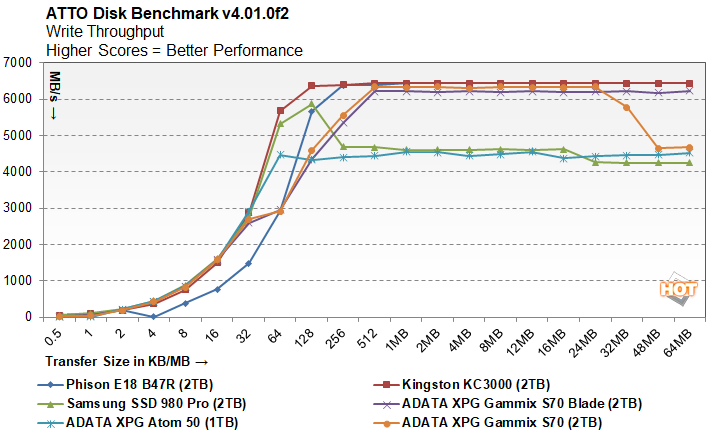
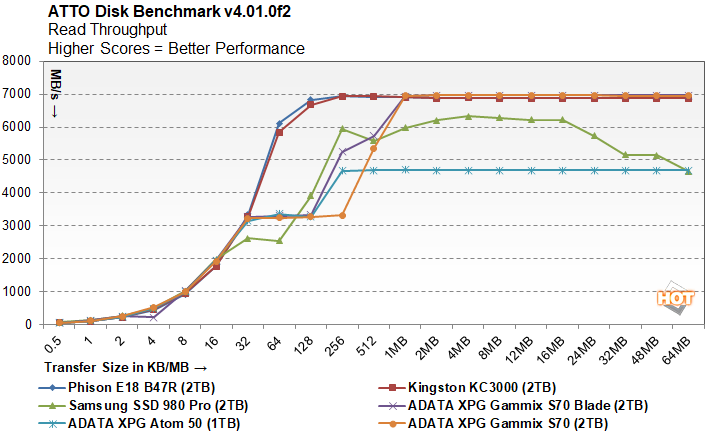
The ADATA XPG Gammix S70 Blade put up highly competitive reads and write, nearly across the board in the ATTO. There was only a small stretch between the 32K - 256K transfer sizes where the Phison-based drives were on top.

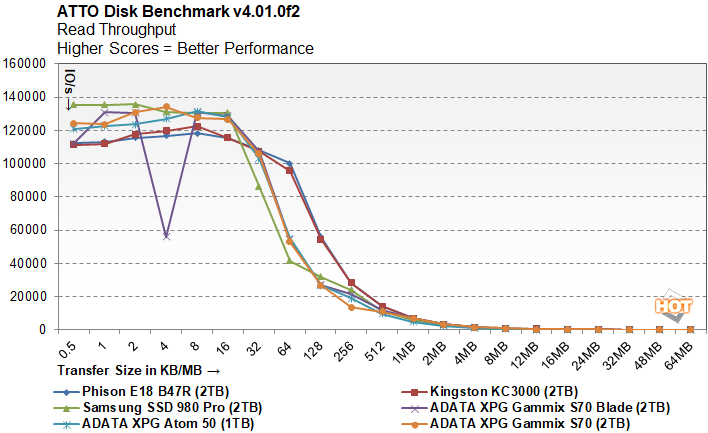
IO performance according to ATTO shows the S70 based drives trailing somewhat with the smallest transfer sizes, but once the 4K mark is reached, the high-end drives all compete well against each other here.
AS SSD Compression Benchmark
Next up we ran the Compression Benchmark built-into AS SSD, an SSD specific benchmark being developed by Alex Intelligent Software. This test is interesting because it uses a mix of compressible and non-compressible data and outputs both Read and Write throughput of the drive. We only graphed a small fraction of the data (1% compressible, 50% compressible, and 100% compressible), but the trend is representative of the benchmark’s complete results.

